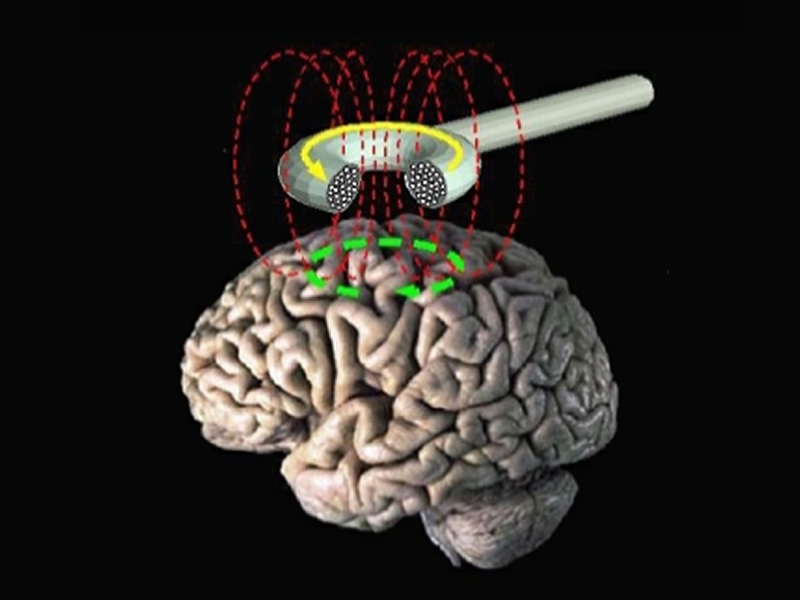TranscranialMagneticStimulation.jpg

Image by Eric Wassermann, MD, 2009 / NIH
Transcranial magnetic stimulation is a noninvasive means of getting electrical energy across the insulating tissues of the head and into the brain.
A powerful and rapidly changing electrical current is passed through a coil of wire applied near the head. The magnetic field, oriented perpendicular to the plane of the coil passes virtually unimpeded through the scalp and skull.
In the brain, the magnetic field produces currents in the induced electrical field lying parallel to the plane of the coil.
These currents are able to excite neural processes lying in the plane of the induced field in a manner roughly analogous to direct cortical stimulation with electrodes.

